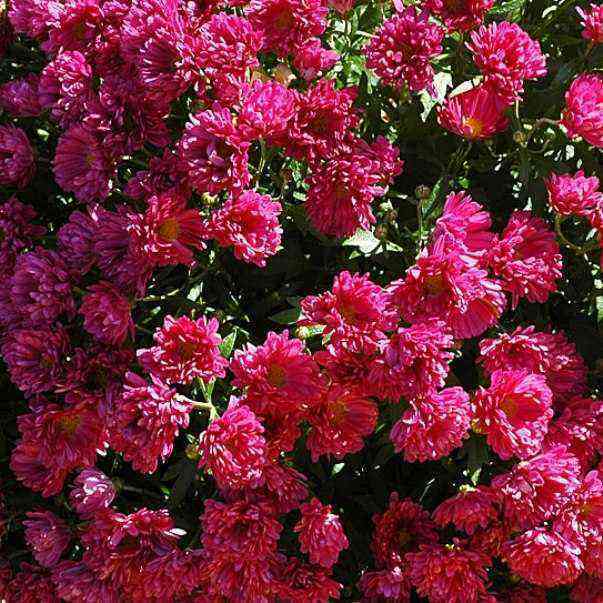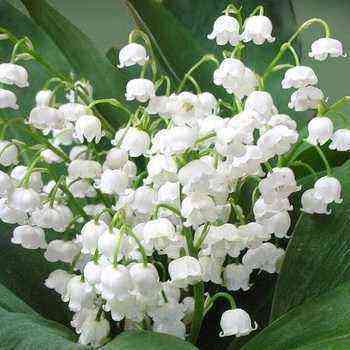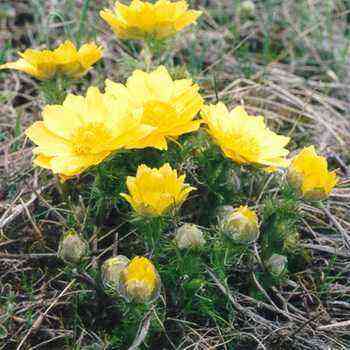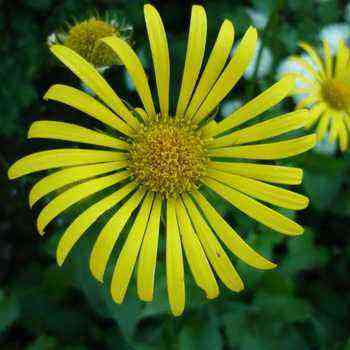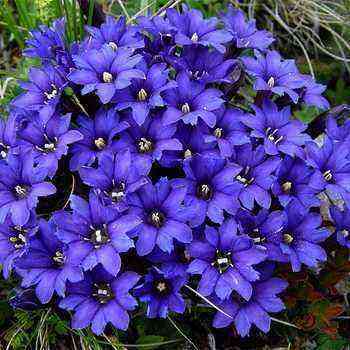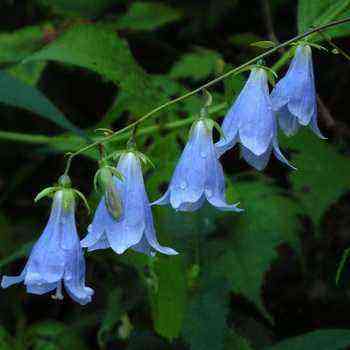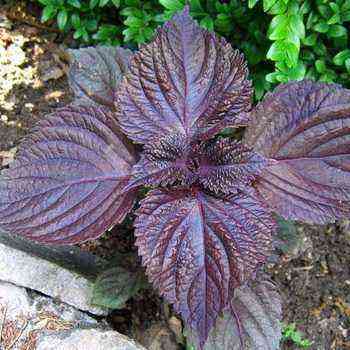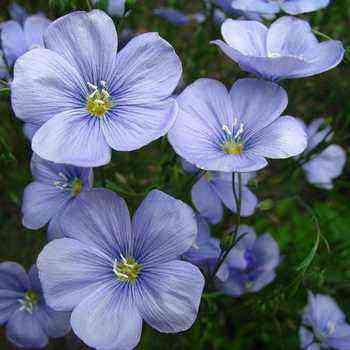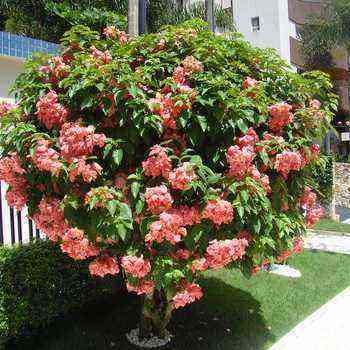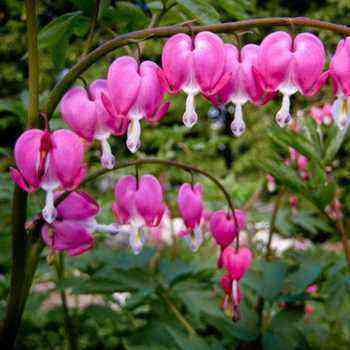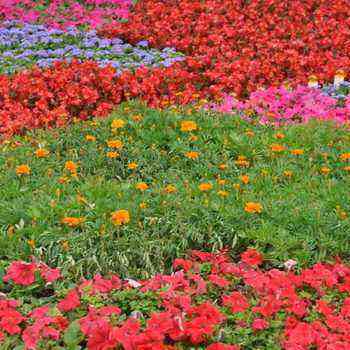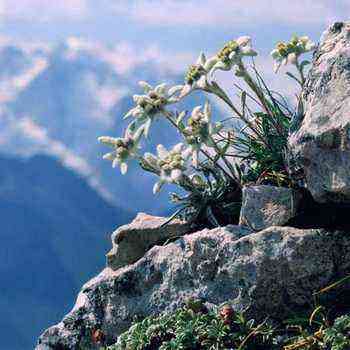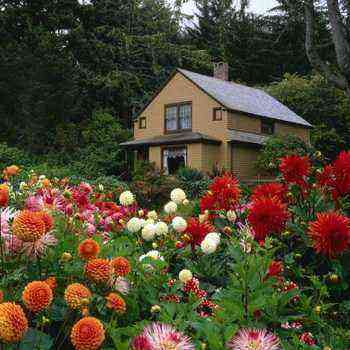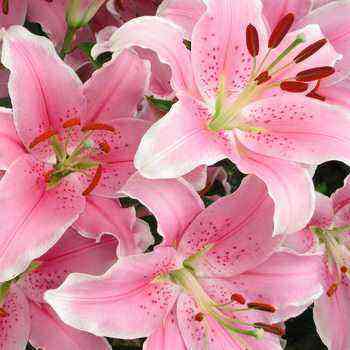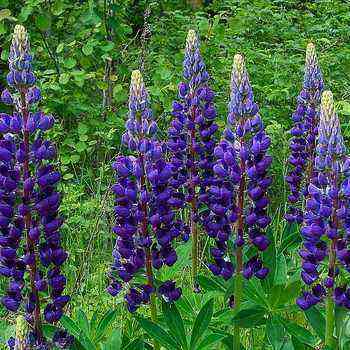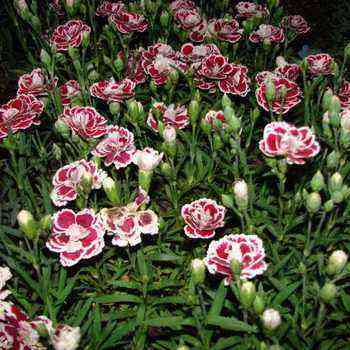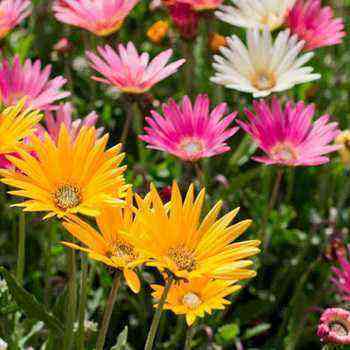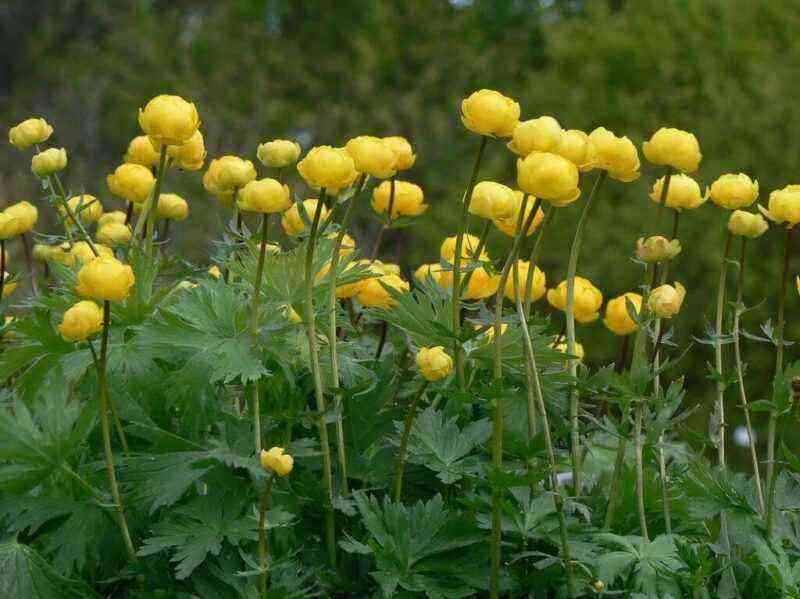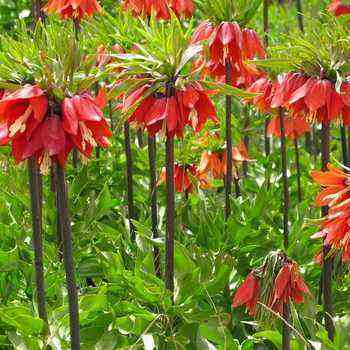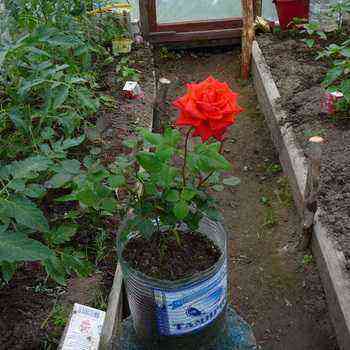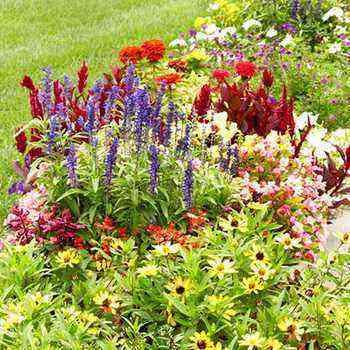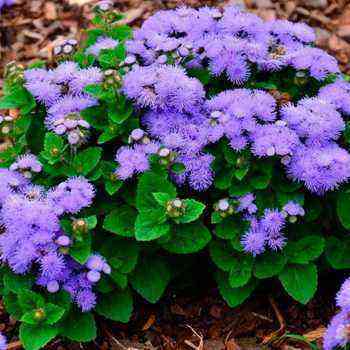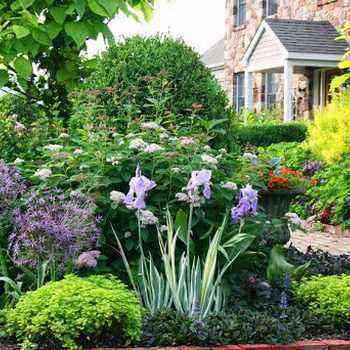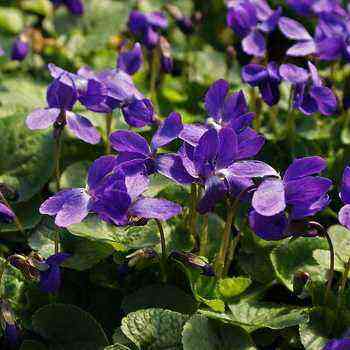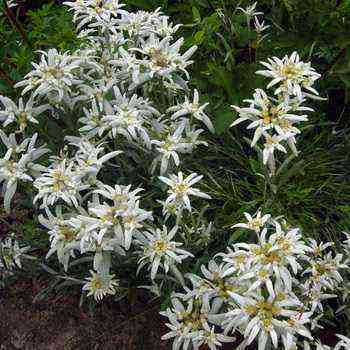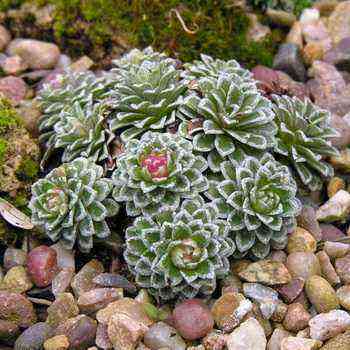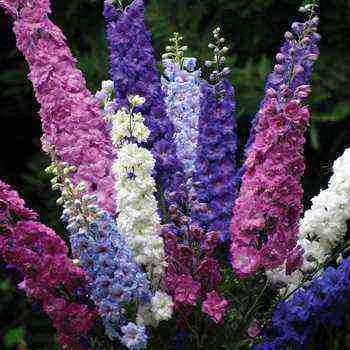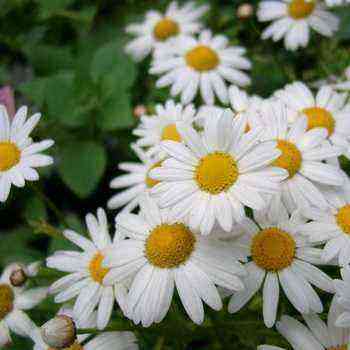 Peonies are frost-resistant plants, therefore, with the onset of autumn, it is recommended to plant them immediately in open ground. Care and cultivation of peonies is not a very troublesome process, but it requires compliance with certain agrotechnical rules.
Peonies are frost-resistant plants, therefore, with the onset of autumn, it is recommended to plant them immediately in open ground. Care and cultivation of peonies is not a very troublesome process, but it requires compliance with certain agrotechnical rules.
How to properly care for peonies in order to achieve their lush June flowering, how to feed and how to fertilize the soil correctly, as well as other secrets of agricultural technology are offered to your attention on this page.
Planting and caring for peony seedlings (with video)
If the planting of peonies will be carried out in August, then they can be sown directly into the ground. If the seeds are sown for seedlings in winter, then in this case a two-stage stratification is artificially carried out. For this purpose, you will need a heating pad with a thermostat in order to adjust the daily temperature fluctuations by switching.
How to plant peony seeds and care for seedlings? Seeds are sown in small containers in moistened sand and placed on a heating pad. During the month, the temperature of warming up during the day is increased to 30 ° C, and at night it is reduced to 15 ° C. The sand in which the seeds germinate is periodically moistened with a spray bottle. As soon as the roots appear, proceed to the “cold” stage.
At this stage, the seeds that have hatched are transplanted into boxes with fertile soil (peat cubes can be used). For them, the temperature is reduced to 5-10 ° C. With the appearance of the first leaves, the seedlings are transferred to a warm place (18-20 ° C).
Planting and caring for peonies in the open field begins in the second half of August.
The crops are monitored every day, watered or sprayed if necessary. The topsoil should always be moist (not wet!). How to care for peonies when shoots appear? In this case, the boxes are immediately opened and placed in a bright place.
In late March – early April, the boxes are placed on a well-lit windowsill. In winter, when many crops do not have enough natural light, the boxes are supplemented. They are placed on shelves equipped with special lighting lamps.
When caring for peonies, you need to constantly monitor the seedlings, water them regularly and moderately, avoiding waterlogging or drying out of the soil.
If some plants suddenly get sick, then they are removed, and watering is reduced. When the surface of the soil dries up (watering is performed only along the edge of the box), it is sprinkled with fine dry calcined sand, ash or crushed coal. If the spread of the disease cannot be stopped, then healthy seedlings dive into fresh soil, which is pre-treated with fungicides (chemicals used to fight fungal plant diseases). Fungicides include Bordeaux liquid, sulfur color, etc. They are also used for seed dressing.
Seedling picking. When the seedlings have 1-2 true leaves, they are dived into special cassettes. The size of the cassettes can be 5-8 cm.
Watch a video on how to care for peony seedlings in the country:
Peony care: watering and feeding flowers
Top dressing and watering seedlings. When caring for peonies, top dressing is applied 7 days after the pick, once a week in the morning or in the evening. Seedlings are watered with a solution of complex mineral fertilizers or alternated with watering with solutions of liquid organic fertilizers. If the leaves of the plants have a pale light green color (if this is not a feature of the variety), then complex fertilizers can be replaced several times with nitrogen fertilizers, for example, ammonium nitrate. When caring for flowers, peonies are watered with clean water after feeding, especially after using nitrogen fertilizers, in order to avoid leaf burns.
Watering should be abundant, but infrequent.
The soil must be allowed to dry out, but not dry out. Also, the surface of the soil must be regularly loosened so that a soil crust does not form.
Conditions for growing peonies in the open field: soil requirements
When growing peonies in the open field, certain soil requirements must be observed. Peonies prefer loose, permeable soil rich in nutrients, without weeds. One of the necessary conditions for growing peonies is softening the soil with peat or humus. Before planting peonies in open ground, if the soils are sandy, clay is added to them. However, before planting, it is not recommended to put fresh manure in the pits, since an excess of nutrients has a bad effect on the growth and development of plants.
For growing peonies in the garden, well-processed weakly alkaline loams are considered the best soil, the acidity level of such soils (pH) is 6.5.
Growing peonies in the country: how to fertilize the soil
When growing peonies in the country, preparing the soil for planting, small doses of nitrogenous and phosphorus mineral fertilizers are preliminarily introduced. The best fertilizer for peonies is bone meal at the rate of 300 g per 1 m2. After its introduction, the plants do not need to be fed for 2-3 years.
Before caring for peonies in the country, planting holes should be prepared in advance. This is done in July so that the land in them has time to settle by the time of planting. When digging holes, the topsoil is laid aside, the rest is removed. A mixture of organic fertilizers is introduced into the lower part of the pit. It is good if it is a mixture of rotted manure with compost and peat, 150-200 g of superphosphate or 300-400 g of bone meal and 150-200 g of potassium sulfate.
If the soil on the site is clayey or loamy acidic, then 150-200 g of crushed slaked lime are added. To the middle of the pit, soil is poured from the top layer, everything is mixed and tamped. The prepared layer will serve as a supply of nutrients for future plants.
How to plant and care for peonies in the country (with video)
Peonies are planted in the ground at a distance of 50 to 90 cm from each other. A hole for planting a bush is prepared 1-2 weeks before disembarkation. A hole is dug at the site with a depth of 60 cm and a diameter of about 50 cm.The bottom of the hole is laid in the following sequence:
- 20 cm drainage layer of a mixture of sand and gravel;
- 20-30 cm layer of the top dressing mixture (compost, humus, 200 g of superphosphate, 100 g of lime, 300 g of wood ash, 100 g of potassium sulfate);
- the remaining space is filled with a mixture of compost and earth.
If the soil is of high acidity on the site, then before planting the peonies, it is mixed with lime (1 kg of lime per 1 m2). It is not recommended to plant peonies in damp places.
If, in the area where peonies will grow, groundwater passes close to the surface or the soil itself is of high humidity, then a flower bed should be arranged for them on an elevation or drainage ditches should be laid on the site. Sandy soil is fertilized with humus before planting.
You can watch a video of planting and caring for peonies here:
Peonies: how to water, how to feed and fertilize
Make sure the soil near the stem is dry before watering the peonies. Watering the peonies should not be frequent, but regularity must be observed.
And how to feed and fertilize peonies in order to achieve abundant flowering? If the planting was done correctly, then young plants begin to fertilize from the third year of life. The timing of fertilization, their rates and frequency depend on how fertile the soil is, as well as on the age and phases of plant development.
Peonies assimilate nutrients throughout the growing season: at the beginning of growth, plants absorb a lot of nitrogen, during the appearance of buds and flowering – nitrogen, phosphorus and potassium, and when buds are laid – phosphorus and potassium.
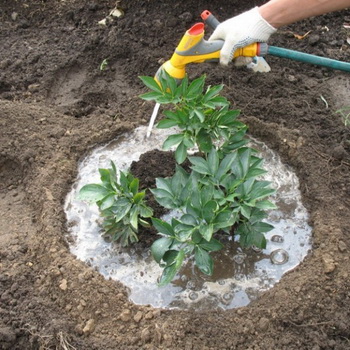 Nitrogen. It is necessary for peonies for the formation of a large vegetative mass and the formation of buds. In the leaves during budding, the nitrogen content is 4.5-6%. It is introduced several times in small doses. All top dressing is best done from early spring to the beginning of flowering (4 times in total). You need to make 10-15 g of active ingredient per plant (ammonium nitrate – 60 g).
Nitrogen. It is necessary for peonies for the formation of a large vegetative mass and the formation of buds. In the leaves during budding, the nitrogen content is 4.5-6%. It is introduced several times in small doses. All top dressing is best done from early spring to the beginning of flowering (4 times in total). You need to make 10-15 g of active ingredient per plant (ammonium nitrate – 60 g).
Phosphorus. This nutrient is best applied at the time of planting. 50-70 g of superphosphate is added to one landing pit. This amount is enough to provide the plant with phosphorus for a year. It should be noted that the effect of phosphorus is manifested only in the presence of nitrogen. On podzolic soils, the phosphorus supply is 20-30 mg per 100 g of soil.
Potassium. Podzolic soils, as a rule, do not contain enough potassium, which is why 1-2 additional fertilizing is needed. Make 25-40 g per adult plant. High supply of podzolic soils with potassium – 25-30 mg per 100 g of soil.
Bor. This nutrient also plays an important role in nitrogen metabolism.
How to fertilize peonies during the growth of shoots? At this time, they are fed with ammonium nitrate (15 g per 10 l of water.) During bud setting and flowering, soil mineralization is carried out. Take 5 g of potassium salt, 7.5 g of ammonium nitrate and 10 g of superphosphate per 10 liters of water. After the flowering period, the peonies are fed with 5 g of potassium salt and 10 g of superphosphate per 10 liters of water. To get a greater effect, mineral fertilizers alternate with organic or combine them.
For old bushes of peonies (8-15 years old), the amount of mineral fertilizers is increased by 1.5 times compared to young ones. Good results are obtained by feeding with slurry. In this case, it is important not to allow top dressing to get on the plant rhizome.
In the first year after planting, foliar feeding is most effective. It is recommended to carry out three foliar dressings with an interval of 10-15 days.
The first feeding: as soon as the aerial part of the plants grows (40-50 g of urea per 10 liters of water).
Second feeding: 40-50 g of carbamide per 10 liters of water with the addition of one tablet of microelements.
The third feeding: 2 tablets of microelements, dissolved in 10 liters of water.
Agrotechnology for growing peonies in the garden: the formation of a bush
The agrotechnology of growing peonies provides for the obligatory shaping of the bush. If it is important to ensure long and abundant flowering, then after the central flowers wither, they must be removed immediately, without affecting the leaves. In this case, the new side buds will have the opportunity to develop in full force, and then the bush will bloom for a long time and magnificently.
If peonies are grown for cutting, then the side buds should be removed, leaving one central one on the stem. This is necessary in order for nutrients to flow to him. Then the flower will be lush and healthy.
Flowers can be cut only from three-year-old bushes, the first two years all the buds are removed, which allows the plant to form a powerful branched root system.
When forming a bush, the buds are removed from the plant when they reach the size of a pea. Break off the buds carefully so as not to damage the plant.
Breeding methods for peonies by dividing the bush and cuttings
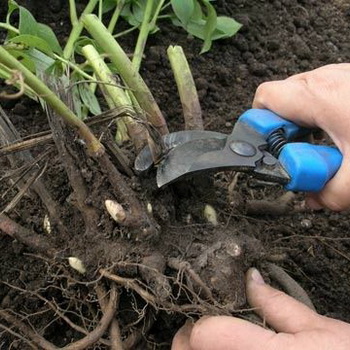 When caring for peonies, reproduction is done in three ways. The easiest is the reproduction of peonies by dividing the bush, in which the rhizome is dug up from mid-August to mid-September, and then divided so that each piece of the rhizome has at least 3 buds. In this case, the old roots are shortened and new plants are planted in a previously prepared place.
When caring for peonies, reproduction is done in three ways. The easiest is the reproduction of peonies by dividing the bush, in which the rhizome is dug up from mid-August to mid-September, and then divided so that each piece of the rhizome has at least 3 buds. In this case, the old roots are shortened and new plants are planted in a previously prepared place.
Using the method of reproduction of peonies by layering, in the spring they put a box without a bottom measuring 50 X 50 cm, 35 cm high on the bush.As the shoots grow, 5 cm soil (humus, peat) is added to the box in layers. The soil in the box must be moist. In the process of development, the peony forms renewal buds and additional roots. From mid-August to mid-September, it is necessary to cut the stems under the new buds and plant them for growing in the nursery.
When peonies are propagated by cuttings, two weeks before the flowering of the bush early in the morning, a cutting of a leaf is cut off near the ground, the cut is made with a sharp knife. Take a stalk from the bottom or middle part. Under the bottom sheet, after 1.5 cm, an oblique cut is made, above the top sheet, an upper cut is also made after 1.5 cm (the top sheet is shortened by 1/3).
No more than 2 cuttings can be cut from one stem. They are placed in water to which a rooting stimulant is added and left for one day. Then the cuttings are planted in a greenhouse – these are boxes where the bottom layer is formed by 30 cm of earth and 10 cm of sand. Planted at an inclination of 45 °. In this case, the leaves should not be in contact with each other. The planted cuttings are closed and shaded for the first few days. They are sprayed twice a day for two weeks. After rooting the cuttings, the greenhouse is gradually opened. For the winter, the leaves are cut, covered and the plants are left in a greenhouse.
However, not all varieties of peonies can be rooted in this way.
